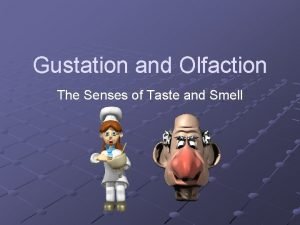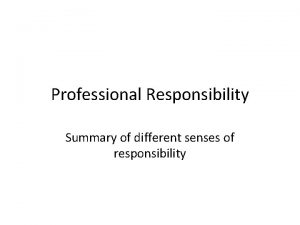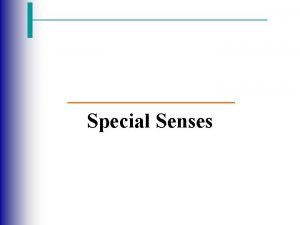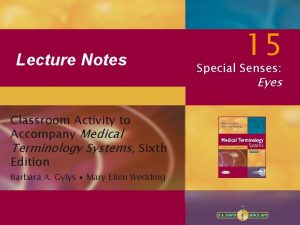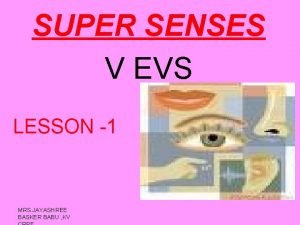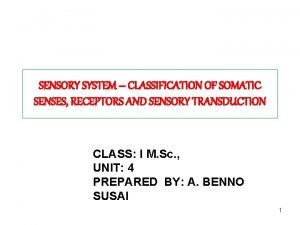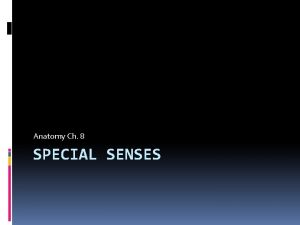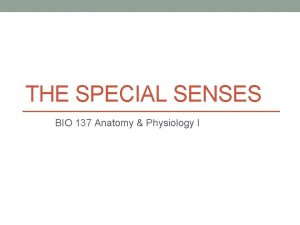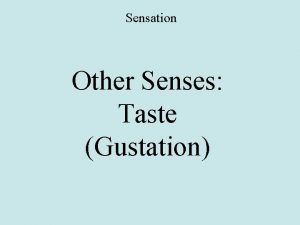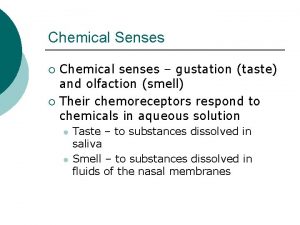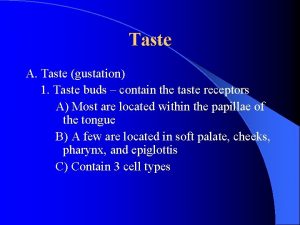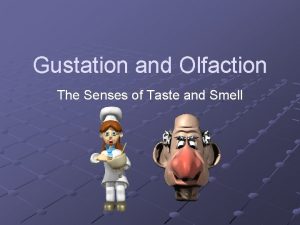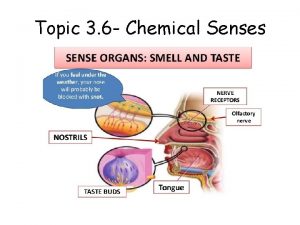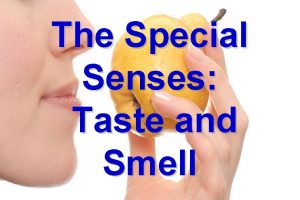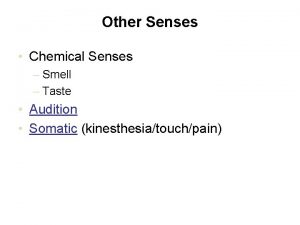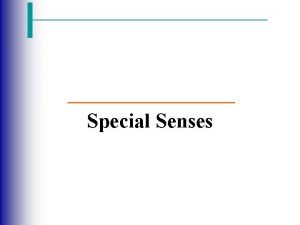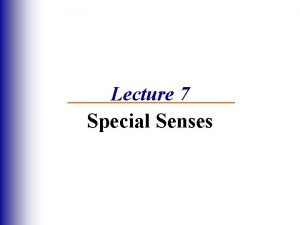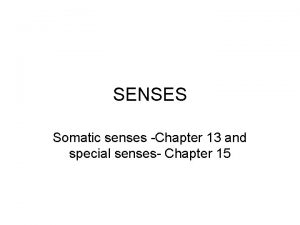Other Senses Taste Gustation Taste Taste is a

























- Slides: 25

Other Senses: Taste (Gustation)

Taste • Taste is a chemical sense. • The receptor cells for taste are the taste buds.

• On average, adults have about 7, 500 taste buds. • These receptor cells are located in the tongue and in the mouth. • When food dissolves on these receptors, TRANSDUCTION occurs • Damaged taste receptor cells are replaced within a few days to 2 weeks Taste

Taste • Substances dissolved by saliva activating the taste buds • (cheeks, roof of mouth, throat, tongue)

• Taste Sensations –sweet –sour –salty –bitter


Supertasters • People with an abundance of taste receptors • Approximately 25% of the population

Nontasters • People with a minimum of taste receptors • Taste with less intensity than the rest of the population • Approximately 25% of the population

Other Senses:

Smell • Olfactory cells in the upper nasal passages detect molecules in the air. • Taste and smell interact to produce flavor.

Smell • Smell is a chemical sense. • Olfactory receptors/cells in the upper nasal passages detect molecules in the air. • Taste and smell interact to produce flavor.

Olfactory Cells • The chemical receptor cells for smell • Located in the nasal passages


Smell

Smell

Other Senses: Touch

Touch • Touch receptors are on the skin • Four basic skin senses are – Pain, warmth, cold, and pressure • All skin sensations are a combination of these four basic senses


Sensitivity of Diff body to PAIN Most Sensitive • Back of knees • Neck region • Bend of elbow Least Sensitive • Tip of the Nose • Sole of foot • Ball of thumb


Gate-control Theory of Pain • Pain messages travel on one set of nerve fibers containing pain gates. • The gates are open when pain is felt. • Other sensory messages go through another set of fibers. • The non-pain fibers can close the pain gates to stop the sense of pain.

The last sense….

Kinesthetic Sense • The system for sensing the position and movement of individual body parts • Relies on receptor cells from the muscles and joints • One’s leg “falling asleep” is a disruption of the kinesthetic sense

Let’s Review • Name the senses • How many are there? • Think again…

The senses 1. Vision 2. Hearing 3. Tasting 4. Touching 5. Smelling 6. Vestibular 7. Kinesthetic Now briefly describe what each one does
 Distinguish between general senses and special senses.
Distinguish between general senses and special senses. General senses vs special senses
General senses vs special senses Olfctory
Olfctory Gustation and olfaction
Gustation and olfaction Gustation refers to
Gustation refers to Facts about taste
Facts about taste Taste buds on cheeks
Taste buds on cheeks Taste and other tales summary
Taste and other tales summary Other initiated other repair
Other initiated other repair What is sense of responsibility at work
What is sense of responsibility at work General and special senses
General and special senses Pearson
Pearson Taste anatomy
Taste anatomy Building vocabulary activity: the special senses
Building vocabulary activity: the special senses Signal conclusion
Signal conclusion Five super senses of tiger
Five super senses of tiger What a person perceives using his or her senses
What a person perceives using his or her senses Cranial nerve mnemonic
Cranial nerve mnemonic Classification of sensory receptors
Classification of sensory receptors Poem on physics
Poem on physics Multiple senses of lexical items
Multiple senses of lexical items Special senses
Special senses Chapter 8 special senses
Chapter 8 special senses Bio 137
Bio 137 An explicit service is readily observable by the senses.
An explicit service is readily observable by the senses. Example of visual imagery
Example of visual imagery



